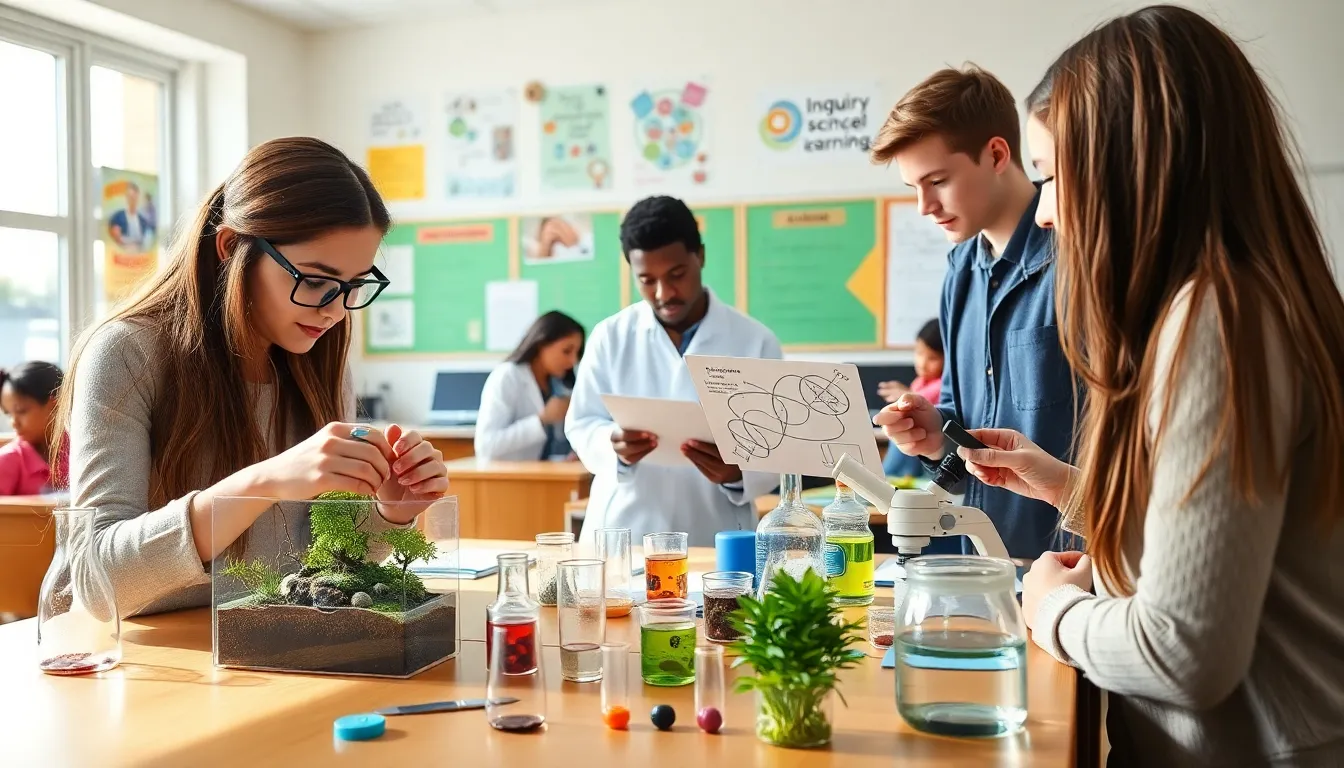Table of Contents
ToggleIntegrated science education serves as a transformative approach to science learning, merging various scientific disciplines into cohesive courses of study. This methodology not only enhances student engagement but also cultivates critical thinking skills essential for addressing complex real-world problems. Within this context, Redwebzine emerges as a potential catalyst for redefining science education by providing versatile learning resources and a platform tailored for innovative instructional strategies. This article delves into the various aspects of integrated science education, focusing on Redwebzine’s role and the potential impact it can have on educational practices.
Understanding Integrated Science Education

Integrated science education is characterized by weaving together different scientific disciplines, such as biology, chemistry, physics, and environmental science, into a unified curriculum. This approach promotes interdisciplinary learning, helping students to draw connections between seemingly disparate subjects. By breaking down the silos that often exist in traditional science education, integrated science encourages students to perceive the relevance of science in everyday life and its interrelationships with societal issues. This methodology responds to the need for learning experiences that reflect the complexities of the natural world, preparing students to engage in inquiry-based learning and fostering their ability to think critically and solve problems.
Also, integrated science education supports the idea that science cannot be fully understood in isolation: it is intrinsically linked to technology, engineering, and mathematics (STEM). With an increasing emphasis on the STEM disciplines, educators are finding innovative ways to highlight these connections, thereby enriching the educational experience.
The Role of Redwebzine in Science Education
Redwebzine is positioned as an innovative platform providing a wealth of resources and tools aimed at enhancing integrated science education. By leveraging digital technology and online media, Redwebzine presents a unique opportunity to engage students in science learning through interactive content, multimedia resources, and collaborative projects.
The platform offers educators access to diverse teaching materials, including articles, videos, and tutorials that align with curricular standards in science education. This wealth of resources empowers teachers to create integrated lessons that resonate with their students, eventually fostering greater enthusiasm for science. Besides, Redwebzine’s community aspect encourages peer collaboration among educators, allowing them to share best practices, insights, and experiences in implementing integrated science curricula.
Plus to supporting teachers, Redwebzine also creates opportunities for students to participate in science competitions, webinars, and interactive workshops, so enhancing their learning experience beyond the traditional classroom setting.
Benefits of Integrated Science Education
The benefits of integrated science education extend far beyond improved student interest. First and foremost, this approach cultivates critical thinking and problem-solving skills, as students are encouraged to tackle complex, real-world problems that require the application of multiple scientific concepts. Besides, integrated science education promotes collaborative learning, allowing students to work together on projects that require shared knowledge and materials.
Also, this methodology fosters an understanding of the interconnectedness of scientific disciplines. For instance, a lesson on climate change can incorporate elements of biology (effects on ecosystems), chemistry (greenhouse gas emissions), and physics (energy transfer processes). Such comprehensive education allows students to develop a holistic understanding of scientific principles, eventually leading to better retention of knowledge.
Also, integrated science education can enhance student engagement by making learning more relevant. When students see the connection between the subject matter and real-world applications, their motivation to learn increases significantly. This is particularly important in nurturing the next generation of scientists and informed citizens.
Challenges in Implementing Integrated Science Education
Even though its numerous advantages, implementing integrated science education presents challenges that educators must navigate. One significant hurdle is the inadequate preparation of teachers to deliver integrated curricula. Many educators possess expertise in one specific scientific discipline, and may feel less confident or equipped to teach across multiple areas. This lack of training can impede the effective integration of subjects and result in fragmented or superficial lessons.
Another challenge lies in curriculum design. Crafting an integrated science curriculum that meets educational standards while also engaging students can be an intricate process. Teachers may struggle to balance depth and breadth, covering enough content to satisfy standards while also allowing for the integration of various disciplines.
Finally, the assessment of integrated science education presents difficulties. Standardized testing often focuses on separative disciplines, making it challenging to evaluate students’ performance in an integrated environment. As a result, educators may find themselves at odds with existing assessment frameworks, leading to frustration and a misalignment of educational priorities.
Innovative Strategies for Effective Science Integration
To address the challenges of integrated science education, innovative strategies can be implemented to help effective integration. Collaborative teaching models, where educators from different scientific backgrounds team up to deliver lessons, can enhance confidence and foster a more comprehensive understanding of disciplines. This synergy allows teachers to share their expertise while creating a richer, more diverse learning environment for students.
Project-based learning (PBL) is another approach that encourages integration. Students work on projects that require the application of concepts from multiple scientific disciplines, promoting hands-on learning and critical thinking. For example, a project on renewable energy could involve engineering, environmental science, and physics, allowing students to engage deeply with each subject’s intricacies.
Also, technology can play a pivotal role in aiding integration. Online platforms and tools can provide interactive simulations and resources that make it easier to connect various scientific concepts. By utilizing these tools, educators can craft lessons that are not only informative but also engaging, catering to diverse learning styles.
Case Studies of Successful Integrated Science Programs
Several case studies illustrate the successful application of integrated science education in various settings. One notable example is a middle school program that combines biology, chemistry, and physics into a single curriculum. This integrated approach allows students to study food science, examining the chemical processes behind cooking while exploring biological aspects of nutrition and discussing physical changes in food preparation. The success of this program is evidenced by improved student engagement and comprehension, leading to higher test scores in science.
Another example can be found in a high school initiative where students research local environmental issues, such as water quality or air pollution. Through this project, they not only learn about the science behind these problems but also collaborate with local governmental organizations to propose solutions. This approach not only reinforces scientific concepts but also instills a sense of civic responsibility and real-world relevance, significantly enhancing student learning experience.
Future Perspectives on Integrated Science Education
Looking ahead, integrated science education is poised to further evolve, especially with the advancement of digital technology and educational methodologies. The growing emphasis on STEM education indicates a positive trend towards greater integration of sciences in curricula. Enhanced accessibility to digital resources through platforms like Redwebzine promises to help this shift by offering diverse, interactive materials suitable for integrated learning.
Also, the continuing development of assessment tools tailored for integrated education will help educators evaluate student performance more effectively. As educational policies evolve, there may be increased support for interdisciplinary teaching models, encouraging teachers to adopt integrated approaches that align with current educational practices and student needs.
Eventually, the future of integrated science education appears bright, with the potential to better prepare students for the complex challenges they will face in an increasingly interconnected world.
Conclusion
Summarizing, integrated science education represents a crucial step towards a more cohesive and relevant understanding of science in the educational landscape. By utilizing platforms like Redwebzine, educators can overcome traditional barriers, fostering an atmosphere that promotes inquiry, critical thinking, and collaboration among students. While challenges exist, the benefits of this approach, including enhanced engagement, improved problem-solving skills, and deeper comprehension of interconnected scientific principles, create a compelling case for its adoption and implementation in educational settings. As educators and stakeholders work together to cultivate integrated science curricula, students will undoubtedly benefit from a richer, more fulfilling learning experience.







